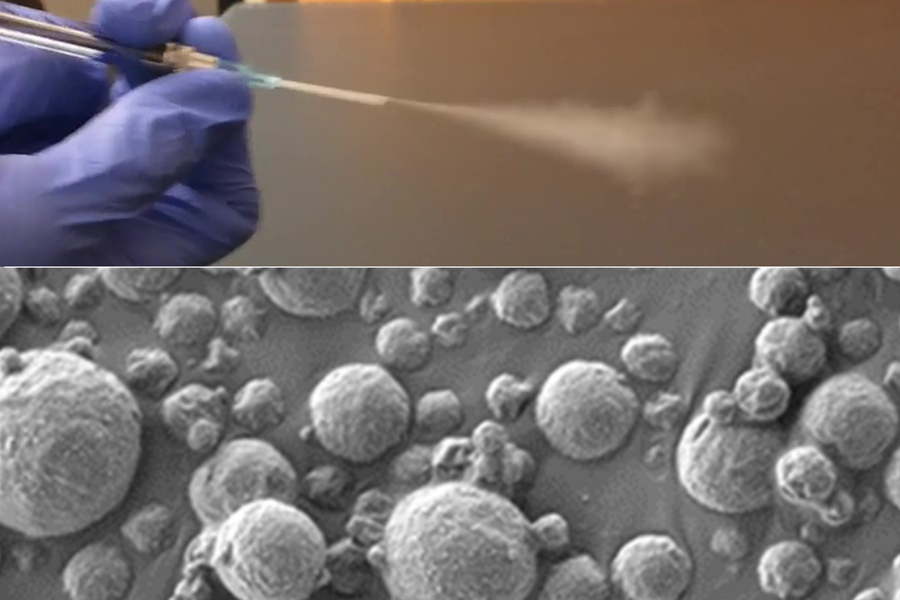Using a new technology developed at MIT, diagnosing lung cancer could become as easy as inhaling nanoparticle sensors and then taking a urine test that reveals whether a tumor is present.
The new diagnostic is based on nanosensors that can be delivered by an inhaler or a nebulizer. If the sensors encounter cancer-linked proteins in the lungs, they produce a signal that accumulates in the urine, where it can be detected with a simple paper test strip.
This approach could potentially replace or supplement the current gold standard for diagnosing lung cancer, low-dose computed tomography (CT). It could have an especially significant impact in low- and middle-income countries that don’t have widespread availability of CT scanners, the researchers say.
“Around the world, cancer is going to become more and more prevalent in low- and middle-income countries. The epidemiology of lung cancer globally is that it’s driven by pollution and smoking, so we know that those are settings where accessibility to this kind of technology could have a big impact,” says Sangeeta Bhatia, the John and Dorothy Wilson Professor of Health Sciences and Technology and of Electrical Engineering and Computer Science at MIT, and a member of MIT’s Koch Institute for Integrative Cancer Research and the Institute for Medical Engineering and Science.
Bhatia is the senior author of the paper, which appears today in Science Advances. Qian Zhong, an MIT research scientist, and Edward Tan, a former MIT postdoc, are the lead authors of the study.
Inhalable particles
To help diagnose lung cancer as early as possible, the U.S. Preventive Services Task Force recommends that heavy smokers over the age of 50 undergo annual CT scans. However, not everyone in this target group receives these scans, and the high false-positive rate of the scans can lead to unnecessary, invasive tests.
Bhatia has spent the last decade developing nanosensors for use in diagnosing cancer and other diseases, and in this study, she and her colleagues explored the possibility of using them as a more accessible alternative to CT screening for lung cancer.
These sensors consist of polymer nanoparticles coated with a reporter, such as a DNA barcode, that is cleaved from the particle when the sensor encounters enzymes called proteases, which are often overactive in tumors. Those reporters eventually accumulate in the urine and are excreted from the body.

